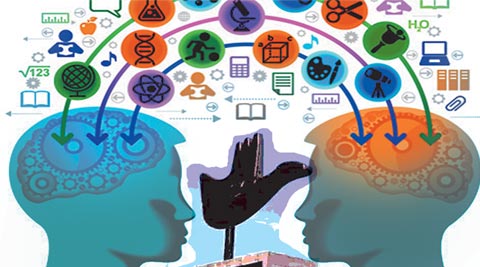-

Smart City list has been unveiled 7 months after the process for identifying Smart Cities started with the government announcing the ones that will get funded this year. The Smart Cities Challenge is a competition designed to develop smart proposals to improve the lives of city dwellers. For this, the ministry of urban development selected Bloomberg Philanthropies to be its knowledge partner. It is estimated that by 2030, 40% of India’s population will live in urban areas and contribute 75% of the country’s GDP. The 20 identified cities have provided plans to mobilise resources worth Rs 50,802 crore over the next five 5 years under the public private partnership (PPP) model. 10 of the 20 cities plan to mobilise Rs 8,521 crore under PPP. This redevelopment will happen over 26,735 acres of land. These were the basic statistics and here below we provide what you really wanted to know about teh questions, 'what next', 'who gains' and more:
-
1. How were towns in Smart City list identified? The Smart Cities Mission was rolled out in June 2015. In the first stage, state governments had to short-list potential Smart Cities based on criteria specified by the Union ministry of urban development. The 100 Smart Cities have been divided equitably across states. It gives equal weightage to the state’s urban population and the number of towns in the state/Union Territory. Uttar Pradesh had to nominate 13 cities, Tamil Nadu (12), Maharashtra (10), Madhya Pradesh (7), Gujarat, Karnataka (6 each), Rajasthan, West Bengal (4 each), Andhra Pradesh, Bihar, Punjab (3 each), Telangana, Haryana, Chattisgarh and Odisha (2 each). Each of the 100 cities (only 98 were named finally since Uttar Pradesh and Jammu & Kashmir could not finalise a city each in time) submitted proposals by end-December. A panel of experts examined these proposals to identify the first 20 cities that will get funding starting this year. Next year, another 40 cities will be selected, while the rest will come in the third year. The selection was based on a series of parameters, including city vision and strategy, cost effectiveness, credibility of implementation and innovation. Bhubaneswar topped with a score of 78.83% followed by Pune (77.42%) and Jaipur (73.83%).
-
2. What happens next? The selected cities now need to set up special purpose vehicles (SPVs) to obtain funds from the Centre and the state. Each SPV will plan, appraise, approve, implement, manage, operate, monitor and evaluate the respective project. The SPV will be headed by a full-time CEO and have nominees of the Centre and the state on its board. Much of the initiative is based on improved ICT services. Most cities have focused on better infrastructure relating to smoother traffic movement, continuous and metered power and water supply. According to a Deloitte report, the PM’s vision of building smart cities will entail and investment of $150 billion over the next five years. Of that, 80% will have to come from the private sector.
-
3. Who spends how much and what facilities can one expect? While the details of all the cities are not out, Bhubaneswar has rolled out a Rs 4,450 crore plan. NDMC has a Rs 1,897 crore plan while Belagavi in Karnataka (Rs 1,685 crore) and Jaipur (Rs 1,667 crore) too have specified the investment planned. Most cities in their area-development plan have focussed on improving transport links, continuous metered water and electricity services apart from building sewerage systems. Much of the facilities will be linked to the internet so that residents can gauge the success of the plans. The NDMC in Delhi also plans to pedestrianise some parts of Lutyen’s Delhi.
-
4. How will a Smart City be funded? Each of the 20 cities that have been selected will get Rs 200 crore in the first year followed by Rs 100 crore each over the next three years from the Centre. States will contribute an equivalent amount. The cities will need to involve the private sector in PPP plans, too. This could be done by raising user charges to meet the expense incurred. In the future, there could be municipal bonds as well.
-
5. Who will be the big gainers when India builds Smart Cities? It all depends on how cities go ahead in implementing their plans. The hope is that planned development in one area will encourage other areas in the city to seek similar plans. The success of one city will prod other cities to replicate such plans. These are early days, but since much of the development will be driven by ICT, there is immense scope for IT companies.